If you’re new to forest management, it might be tempting to think that forestry is a pretty simple affair. There’s a book out there that tells you what a good stocking level is. You can measure this in the woods with a penny from your pocket, and if the stand is overstocked, cut the ugly trees. Now that you’ve established your crop trees, consult the book again to learn the optimal diameter at which they’re ready to harvest. Go home, wait 30 years or whatever, then come back and cut the crop trees down. Voila, you’re a forester.
This approach, though, would miss the holistic side of the pursuit, which is to say that you’ve got to consider the cutting you do in the context of the land around it, otherwise you’re just making myopic decisions in a vacuum. The land’s history, the soil type, the botany around the crop trees all provide hints you can use to maximize the potential of a stand. And the clues really need to be considered all along. If you just go out and focus on the crop trees – grow ’em, cut ’em – well, then what? This is where people get into trouble. Growing timber is not like growing a field of lettuce, where you harvest then replant, imposing your will on a patch of dirt. It’s more a partnership with nature, and while that sounds pretty hippy-dippy, it’s literally and figuratively true. To grow a tree to maturity you’re not going to do anything for decades at a time, but the forest isn’t going to stop doing stuff while you wait – it has its own agenda. A good forester recognizes this agenda, and incorporates it into the harvest plan.
I know and have known many foresters – I respect the trade immensely. That said, I’m also often struck by how amorphous the whole pursuit can be. As a writer, I often go to foresters with specific questions – how do you regenerate oak, say – and I very rarely get satisfying answers. I get suggestions, hints, stories of what didn’t work, contradictory advice. We tend to think of scientists as the people with solutions, but the truth is that science is a trade that deals in questions. Forestry can be an extreme case of this truism – it’s a pursuit full of math, botany, and Ag science, yes, but mixed with a healthy dose of Zen and voodoo. As someone who works in a trade that likes to quantify things, it can make my head hurt.
Anyway, my father’s a forester, and he’s trying to regenerate oak on some timberland he owns. The stand is east-facing, steep and ledgy. There was a significant oak component, mixed with beech, birch, and red maple. He did a six-acre harvest there about five years ago that amounted to a kind of shelterwood cut – that’s where you take a significant portion of the trees to let in light, but leave some to provide a seed source or partial shade or both. Once you get the regen you want, you take the big trees – it’s sort of a clearcut in slow motion.
So he cut everything but some nice oak in the overstory, came back in a year later to treat some of the beech brush, came back in another year expecting to see some nice oak regen and was pretty disappointed. Five years later the patch cut is just awash in beech – nature clearly had other plans.
So it’s on to Plan B, which involved calling up the guys at Fire Management Services. (We did a profile of the outfit a few years back – you can read it here.)
Nort Phillips, Silos Roberts, Mike White, Kevin Beattie, and a bunch of other guys I didn’t get a chance to visit with came down this past week and dripped fire all over the stand. They had the mountain looking like a volcano from the valley below.
The impose-your-will objective in the shelterwood area is to kill the beech brush – Nort figures that we’ll get good mortality on the stuff that’s under 4” in diameter. But they also burned 6 acres of uncut forest, and the idea here is just to see what happens. Oak is a species that plays well with fire – the acorns like exposed soil to germinate in; the big trees have fire-resistant bark. If the fire burns the duff layer enough in this part of the stand, the oak might regenerate under high shade. Foresters call this sort of treatment “mimicking natural disturbance” – it’s part of that whole understanding nature’s agenda thing. One of the lessons in the failed shelterwood is that when you open up the canopy and drench the land in light, you get a lot of stuff you might not want. If we can get the oak regenerating under a high canopy, then release the seedlings when they have a head start, things might turn out better.
Will it work? Dunno. We’ll get our first sense six months from now. A better sense five years from now. And the whole picture in a half-century.


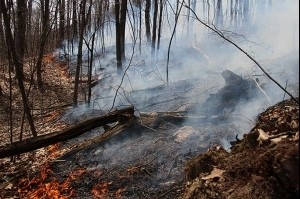
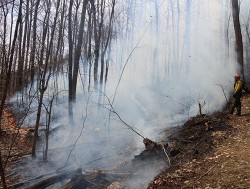
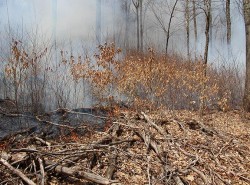
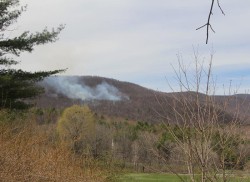
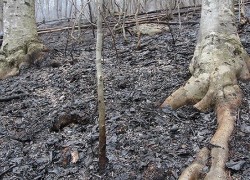
Discussion *